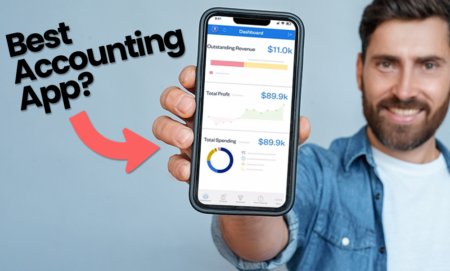If you’re a freelancer looking for a more consistent income, work opportunities, and contacts for diligent professionals, you will need to take on as many clients as feasible. However, juggling multiple clients at once comes with heavy responsibility.
Managing multiple clients requires being proactive and prepared and having processes in place in case things go wrong. To be successful you must have procedures in place to catch them when they do.
You risk losing clients and damaging your company’s reputation if you don’t have the correct tools and system in place. Money, time, and mental stress may be all on the line.
👋 Psst...Have you seen the all-new Feedcoyote yet? They've got a new look, more freelance opportunities, and the best collaboration tool for freelancers! Join over 100,000 fellow freelancers who network, find clients, and grow their business with Feedcoyote. Join for Free »
The good news is you can stay organized and productive while keeping all of your clients satisfied, despite the risk.
This post will discuss eight tips for managing multiple clients and projects.
8 Solid tips for managing multiple clients
Trying to manage multiple clients at once may reduce the quality of your work and lead you to feel stressed. Managing multiple projects necessitates mental toughness, the capacity to juggle several tasks with tight deadlines, and the ability to make those dreaded last-minute modifications.
You’ll have to learn to handle multiple clients as your business expands before you can focus on gaining new, better clients and developing a significant cash stream. However, you can effectively handle several clients by following the eight tips below.
1. Set the right expectations
When consumers’ expectations are realistically defined, it’s easier for your company to manage any situation, especially when there is a service outage, while still satisfying the client’s expectations. Also, you want to build trust, loyalty, and retain clients in the long term from the beginning, and the easiest way to do so is to meet and even exceed their expectations.
Over-promises and under-deliverables are the worst things that may happen to any consumer. So, the first step is to be realistic with your clients about deadlines and project timetables.
Instead of bending reality to make items or services appear more enticing, it’s critical to educate clients about what your service can provide, its capabilities, limitations, and features. When you educate and empower people about you as a business and your services, you ensure that both of you are on the same page, and most crucially, you set more reasonable expectations.
For example, clients expect to be ranked on page one for a competitive keyword in a short period. It’s unrealistic, and they are unaware of the difficulty of achieving a high position for a competitive keyword. So, writers must educate and be honest with their clients and highlight that SEO takes time and is a long-term commitment.
Aside from that, set your chat availability so that clients know when they can contact you. Avoid misinforming clients in any manner as part of your marketing activities to fulfill their sales target.
If you have failed to meet them for reasons beyond your control, apologize to the client and carry out service recovery to make things right.
2. Track time spent on each client project
Apart from providing your clients with accurate bills, time tracking allows you to see the overall picture, analyze productivity and performance, and identify what needs should be optimized and estimated for future projects. It also provides insights into how long it takes to complete specific tasks.
To get started with time tracking, create a list of the clients, projects, tasks, whether a project is billable, and any other data you’d like to track. Ensure that you include small tasks such as revising, planning, communication, and so on.
Choose a project management tool that allows you to track time and distribute hourly resources based on your requirements and clients. It is crucial to compare the time spent and estimated on each client project and specific tasks.
3. Schedule
Creating a project schedule with clearly defined plans, methods, and responsibilities is crucial for understanding your priorities, next objectives, and direction. You’ll constantly know what’s due and what’s coming up. You’ll also improve efficiency, accountability, and transparency.
So, plan the entire week. Define the activities and sequence them correctly. Also, estimate the resources needed and the time required to execute the tasks.

Ensure that the activities scheduled are the specific units of work you must perform to achieve the tasks, rather than the overall tasks themselves. If your planning tool allows for reminders, set it to notify you when each task is due.
4. Create a list
A to-do list may assist you in achieving larger goals, setting you up for success each day, and allowing you to focus on the most critical tasks. It may also help you save time, energy, and the need to make up reasons when you’re distracted. You should have many lists that cover the crucial areas of your life, such as work responsibilities, personal activities, and domestic duties.
It is preferable to begin by restricting yourself to three to five tasks every day. It might be hard to stay motivated when a to-do list is more extensive. Furthermore, after you complete all of your duties, you will feel optimistic about your to-do lists as a whole, which will help you move forward.
Ensure your assignments are tangible actions rather than objectives or a mental vision of what you wish to accomplish. When a new duty comes to your mind, write it down as soon as possible.
Revisit your to-do lists daily, and if you’re feeling overwhelmed, take a minute to reschedule, re-prioritize, and revise your list.
5. Prioritize tasks
When you prioritize your tasks, you become proactive rather than reactive. Sometimes you find yourself dealing with multiple urgent demands while also watching your to-do list expand. The type of your work, timeline, cost, and relevance will all influence how you prioritize your duties.

When you begin your day, the most crucial tasks that serve the biggest purpose and are linked to top-level objectives should be at the top of your priority list. In other words, prioritize large or complicated tasks before moving on to less critical or time-sensitive ones.
If you are a graphic designer, for example, you must first build the design or a critical aspect of the design, then respond to emails, work on your review form, call clients, and so on.
You can use the prioritization matrix. You have the option of ranking the works based on the two most important criteria. For example, you may divide your calendar into categories such as:
- Important and urgent
- Important but not urgent
- Not important but urgent
- Not important but not urgent
You may additionally include criteria such as long-term clients and short-term clients, and so on, depending on your sector and projects. Here’s an example of a task-prioritization template.
Apply this method to each project, then to all of your projects. To feel less overwhelmed, it’s a good idea to divide larger tasks into subtasks. It is also better to do complicated tasks in the morning.
6. Regular client updates
Clients hate being left in the dark. They expect direct communication with their business partners and timely, appropriate response. Having regular contact with your clients is essential for developing, maintaining, and fostering a client relationship.

Begin by developing a communication strategy and calendar for your customer, and then collaborate with them to determine the ideal communication tool or platform. It’s best to offer clients project updates at least once a week. With detailed status updates, you can keep track of your progress.
Send them emails regularly to keep them informed about the project. Highlight accomplished tasks from the previous week, budget spent and remaining on each phase, scheduled tasks for the next week, and so on.
Ensure you provide details like a changed project timeline and an updated budget. Let your clients know, for instance, if you’re struggling to keep up with their demands or if the circumstance prevents you from meeting your regular high standards. For example, as an SEO consultant, you may want to let your client know why you haven’t been able to hit targets and what you are doing to resolve the issues.
7. Use a multiple-project management tool
Multiple-project management tools may be highly beneficial to you and your clients. When managing multiple projects in different places, you waste time transferring data from one tool to another. With these tools, you can easily do various time-consuming activities while better visualizing your projects.
Working with multiple clients and projects also means having to manage different resources. For instance, running multiple SEO projects might mean working with freelance writers as well. For each of these freelancers, you need to track their time, schedule their tasks, view their calendars, and create productivity reports and process invoices. A multiple-project management toll will help streamline your tasks and simplify your workflow.
Also, you should consider project management tools that can integrate with all of the other tools you use and automate time-consuming, repetitive processes, etc.
8. Be as flexible
The more agile and flexible you are, the better you will be able to adjust to meet the needs of each client. Project management flexibility helps you to regularly coordinate tasks and resources, making your work productive and life less stressful.
The key to successful flexible planning in project management is keeping a continual eye on each project, making quick, efficient choices, and adequately allocating resources while staying organized.
When planning, it’s critical to present alternatives and multiple strategies, propose the best solution, identify the project’s risky elements, and so on. That way, you can adjust to any situation and get back on track as soon as possible if something goes wrong.
3 tools to help you manage multiple clients
Freelancers face several obstacles, including proposal writing, invoice preparation, time management, and other areas of client relationship management. As a result, project management software assists freelancers in organizing their activities and separating projects, which is beneficial for those who work for multiple clients.
When selecting a project management tool, consider and analyze various aspects, such as expenses, including implementation and onboarding, required features, integrations with current corporate systems, etc.
In the next part, we will offer three tools that have the most functionality that each freelancer needs.
Moxie
Moxie is a project management tool designed primarily for mobile devices. Unlike other project management tools, you never need to switch to a computer to get additional features or make it easier to use. It gives users access to all features in one place, such as tracking project time, adding and modifying client information, sending bills, adding costs, closing proposals, and more.
It also provides excellent features such as statistics, receiving payments, customization, among others. The dashboard displays statistics such as the amount of time spent on the project, the amount of money collected, and the number of jobs left to accomplish.
Also, it allows you to construct proposal templates simply by dragging and dropping, and you can include your branding components such as your logo, colors, company name, and others. It offers both a free and a premium plan — you can check out a full Hectic review here.
Bonsai
Bonsai’s freelance management tools include invoicing, proposals, contracts, expenditure monitoring, and more. It has invoicing and payment options, allowing you to produce invoices for clients and collect payments for the invoices from them.
Bonsai has a great feature in which you can create your mini-portfolio site and receive a link to it. It also allows you to connect your GitHub, LinkedIn, Dribbble, and anything else you could require. You may also create and send forms to specific clients, projects, and use-cases.
To give your invoices and proposals a more professional appearance, Bonsai offers customizing features such as putting your company’s logo. It integrates with QuickBooks, Calendly, Zapier, Gmail, and Google Calendar.
There isn’t a free plan available. Before you subscribe to the Premium Plan, you may try it free for 14 days.
HoneyBook
You need a customer relationship management (CRM) solution for your business. HoneyBook is one such solution The service assists users in managing business operations from inquiry through billing. It’s an easy-to-use software that allows users to manage projects, schedule clients, sign contracts online, issue invoices, and take payments.
Contracts created with HoneyBook are legally binding papers that your customer must study and sign before the project can move forward. They may do so immediately on the platform. That is an example of a contract created using HoneyBook.
Users may also use customized templates and notifications to reply to clients with automated appointment requests and follow-ups.
Furthermore, you may issue payment reminders automatically and set task reminders based on projects. There is no free plan, and the monthly cost starts at $9.
How to pick the right clients to work with
There’s nothing more frustrating than working with a client that isn’t a good fit for you and your company’s culture. As a solopreneur, you’ll need to set SMART goals and decisions about the client and manage your expectations and everything else that comes with it.
To save time and work more efficiently, you must first pre qualify prospects. Before investing in a pitch, pre-qualifying a potential customer entails evaluating them to see whether they are a suitable fit for you.
You’ll begin by determining what a client wants and its goal. For this stage, it’s crucial to be clear about what type of work you perform and what you don’t do for clients.
Ensure that your potential client shares the same criteria, such as the same mission, similar values, and mutual respect. Also, consider if they will pay you the right amount, whether they will give you a headache, or if they will drive your business ahead, and so on.
In addition, look for clients that are receptive to fresh and inventive ideas since this will drive your creativity and effectiveness. Be open and honest about the price. It’s probably not a good fit if they find your rate too expensive.
Ensure you put them through a screening procedure to see if they’re a good fit. Keep an eye on their communication during the pre qualifying process. For example, do they communicate effectively and politely with you? Are they responsive to your communications and outreach efforts?
You may also use client management software to keep track of your interactions with new and current clients.
Manage multiple clients effectively
As the need for remote employees rises, many freelancers are starting to realize the value of multitasking and managing multiple projects and objectives.
However, the more tasks you take on, the more difficult it is to manage each one well. As a result, managing multiple projects requires a careful balance of organization and flexibility. Every circumstance and customer will be unique. However, if you plan ahead of time, stay organized, and aren’t afraid to take risks, you will make a positive impact on your clients and business.
Last but not least, follow our tips above, and you will be able to manage multiple clients and projects, even if there are many of them. Good luck!
Keep the conversation going...
Over 10,000 of us are having daily conversations over in our free Facebook group and we'd love to see you there. Join us!







